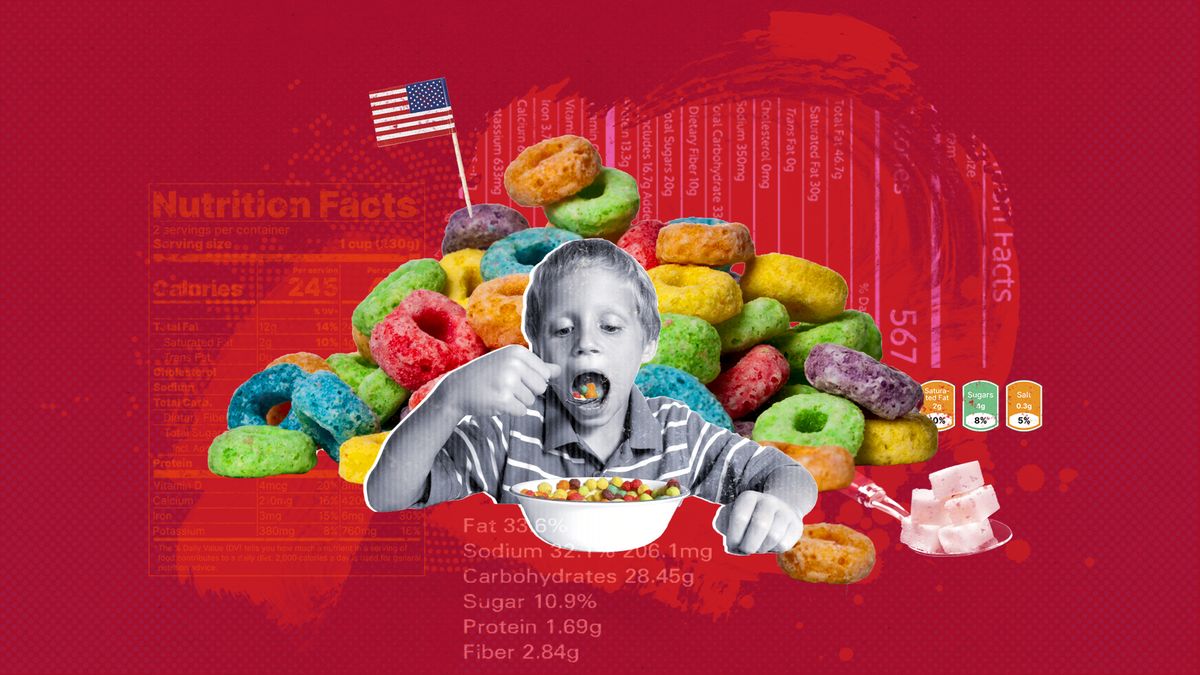
Children’s breakfast cereals are getting more unhealthy
How did your country report this? Share your view in the comments.
Diverging Reports Breakdown
Children’s breakfast cereals are getting more unhealthy
Breakfast cereals have been marketed as healthy, but the label is misleading, says a study. The data revealed that cereals had “notable increases in fat, sodium and sugar” The trend shows a “potential prioritization of taste over nutritional quality,” said the study. It’s recommended to look for cereal labels that say 100% whole grain, said CNN wellness expert Dr. Leana Wen.”The food marketplace is very confusing, and that’s not by accident,” said Dr. Josephine Connolly-Schoonen, the executive director of the nutrition division at Stony Brook Medicine. “Ultraprocessed foods … have been associated with a myriad of negative health consequences,” said Wen.
The cereality
While cereals have been marketed as healthy, the label is rather misleading, according to a new study published in JAMA Network Open . The data revealed that between 2010 and 2023 cereals had “notable increases in fat, sodium and sugar alongside decreases in protein and fiber.” In addition, they “contain high levels of added sugar, with a single serving exceeding 45% of the American Heart Association’s daily recommended limit for children.”
The study analyzed more than 1,000 cereals marketed toward children ages 5 to 12 years and found a 34% increase in fat content, a 32% increase in sodium content, and an 11% increase in sugar during the 13-year span. The trend shows a “potential prioritization of taste over nutritional quality in product development,” said the study. “It reinforces my belief that the food marketplace is very confusing, and that’s not by accident,” Dr. Josephine Connolly-Schoonen, the executive director of the nutrition division at Stony Brook Medicine, said to The New York Times . The food industry “engineers the confusion.”
Subscribe to The Week Escape your echo chamber. Get the facts behind the news, plus analysis from multiple perspectives. SUBSCRIBE & SAVE Sign up for The Week’s Free Newsletters From our morning news briefing to a weekly Good News Newsletter, get the best of The Week delivered directly to your inbox. From our morning news briefing to a weekly Good News Newsletter, get the best of The Week delivered directly to your inbox. Sign up
Ultraprocessed foods “laden with these additives have been associated with a myriad of negative health consequences, including obesity, diabetes, heart disease and premature death,” said CNN wellness expert Dr. Leana Wen. Consuming high levels of sodium during childhood has been “linked to elevated blood pressure and other long-term health concerns,” said Newsweek . “Protein, on the other hand, is essential for children because it supports growth, builds muscles and helps develop a strong immune system.”
Beyond the bowl
Approximately a third of all American children eat cereal each morning, with it being the most common breakfast food for 5- to 12-year-olds, according to an analysis by the Department of Agriculture . Cereal is usually eaten alone without nutrient-dense fruit or protein .
Because childhood nutrition can set the tone for health problems and habits in the future, it’s recommended to look for cereal labels that say 100% whole grain. It’s also ideal to serve cereals that have “added sugar of less than nine grams per serving,” said Wen. This is because 10 grams per serving would “already be 20% of the entire amount of added sugar someone is recommended to consume a day,” in a 2000-calorie diet.
Breakfast cereal is also not the only child-focused food that has been shown to be less healthy than it might be. In 2024, an analysis found that 60% of food marketed to infants and toddlers failed to reach nutritional standards set by the World Health Organization.
Source: https://theweek.com/health/childrens-breakfast-cereals-more-unhealthy
